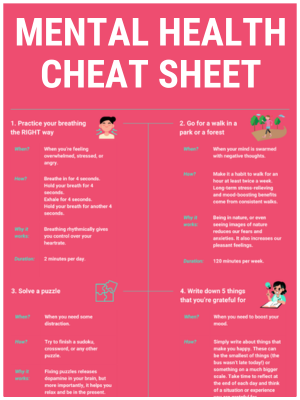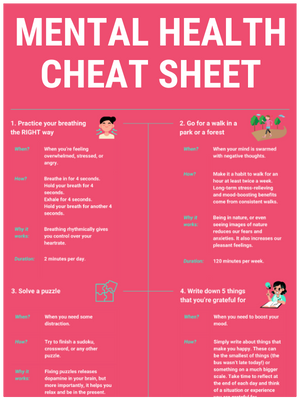The single most significant factor holding you back in life is fear! Think about it, the reason you didn’t ask the one who got away out, is due to a fear of rejection. Too many of us don’t step outside our comfort zone for fear of failure. And we all subconsciously strive for safety to protect ourselves from the risk of death.
While fear may sometimes protect us to some extent, it also holds us back. Were you aware that when fear has a hold of our minds, we focus on what may go wrong instead of what could go right? A life of fear and avoidance is a small and unsatisfactory life indeed.
This article will discuss what it looks like to be fearless. It will also suggest 5 ways you can become more fearless.
Contents
What is fear?
We are all familiar with fear; it’s that sensation we feel when we perceive our safety is at risk. This perception of compromised security also includes our psychological security.
The only thing we have to fear is fear itself.
Franklin D. Roosevelt
Let’s explore this further and look at the physiology and psychology of fear.
On a physiological basis, when we experience fear, a series of reactions take place in the body.
Firstly, we encounter our fear trigger. This trigger can be anything that induces a fear response in an individual. Next, we experience these physiological adaptations:
- The brain triggers a chemical release.
- Raised heart rate.
- Increased breathing rate.
- Energized muscles.
This physical effect is known as the fight-or-flight response. The body is getting ready to fight or run for its life.
On a psychological front, when we experience fear, a couple of things happen:
- Our thinking and decision making is negatively impacted.
- Our thought patterns are contorted.
- We are unable to regulate our emotions.
The long-term impact of living with fear is significant. Fear can:
- Weaken immune systems.
- Cause gastro issues and IBS.
- Reduce fertility.
- Accelerate aging.
- Induce anxiety.
- Prevent memory formation.
- Leading to fatigue, PTSD, and depression.
Some types of fear may be beneficial and serve to preserve life. For instance, getting out of the sea if a shark is spotted is an effective use of fear.
Unfortunately, humans also use fear as a form of manipulation. We exploit fear to try and control other people’s behavior. Here are a few examples of things said to me in the past as a way to control me.
- If you don’t have children, you will regret it.
- If you leave me, you will have nothing.
- Why set up that business? You are only setting yourself up for failure.
- If you don’t go to university, you won’t be able to get a job.
Think about it; fear has become an insidious and pervasive part of our social construct.
💡 By the way: Do you find it hard to be happy and in control of your life? It may not be your fault. To help you feel better, we’ve condensed the information of 100’s of articles into a 10-step mental health cheat sheet to help you be more in control. 👇
Examples of being fearless
When we become fearless, we stop running away from our fears and instead take a stance. We learn to look fear in the eyes and tap into our bravery.
It’s harder for others to manipulate and control us when we become fearless. We take complete control of our lives instead of allowing our fears to hold us captive.
These days, some of the biggest acts of fearlessness are when we risk isolation and ridicule. Examples of this include:
- Having the courage to end a relationship.
- Being true to yourself and coming out as LGBTQIA+.
- Saying “no”.
- Quitting a job.
Every day we hear stories of friends and loved ones breaking free from their fear shackles. From holding a spider to jumping out of a plane, no fear is too small to merit overcoming.
One of my favorite examples of fearless women is Rosa Parks.
In 1955 Rosa Parks refused to give up her seat on the bus for a white male. After years of racial oppression, suppression, and segregation, she had finally had enough.
Her bravery was instrumental in the civil rights movement.
5 ways to become fearless
If you want fear to continue to rule your life, carry on as you are. But if you are ready to stand up for yourself and truly embrace life, today is a great day to start.
Only when we learn to live as fearless warriors can we embrace our true authentic selves. Here are 5 ways you can become more fearless.
1. Address your fear
What are your fears?
Your fears, such as spiders, deep water, or dogs, may be relatively superficial. Or maybe they are a little deeper. You may have fears of abandonment stemming from your childhood.
Either way, spend some time thinking about your fears. Collate a list of your fears and recognize everything that brings you sensations of fear.
Next, spend some time analyzing the origins of this fear.
These are vital first steps, as until you know what your fears are, you can’t conquer them.
2. Start small
A great way to tackle any fear is to start gently.
My friend had an irrational fear of dogs. This fear was holding her back in life and impacted her daily. Even walking down the street and passing a dog would be enough to induce the sensation of fear.
We spent time together with my own dog. Initially, she kept a distance from us, and over time she built the courage to walk beside us. From here, she progressed on to petting my dog.
Then we introduced a few more dogs to our meetings.
In the end, my friend managed to transfer her newfound fearless attitude toward dogs to a more challenging situation. This is how starting small can lead you to be fearless in more ways in life than one.
3. Engage with your internal dialogue
Our brains love to play tricks on us. They create monsters and mishaps. They try and trick us into keeping us safe from nonexistent dangers.
This is explained by different biases such as the negativity bias or declinism.
Our fears will speak to us via our thoughts, but remember, we are not our thoughts. Try to have a conversation with your fears and try to reassure yourself.
While helping my friend with her fear of dogs, she spoke out loud. I heard her say, “It’s ok, this dog is friendly. Ali wouldn’t put me in this position if anything bad might happen.”
When we engage with our fearful dialogue, it helps us:
- Listen to our fears and recognize them.
- Offer reassurance.
- Find comfort from the reassurance.
- Calm the physical and psychological symptoms of fear.
4. Adopt the confidence of another
We all have different fears. You may be confident in a situation that terrifies someone else and vice versa.
A great way to overcome a fear is to borrow the expertise and confidence of someone else. To do this, find someone with an abundance of confidence in an area where you are fearful. If this is a physical skill such as gorge jumping or downhill mountain biking, ask them for tips to improve your skill set and deal with your fears.
Maybe you’re hoping to overcome a psychological fear. In this case, you could seek advice from a friend who has recently been through something that induces the same fear in you.
5. Remember to breathe!
Finally, please always remember to breathe.
Our breathing can dictate whether our body produces a stressed or excited response.
This TEDx Portsmouth video featuring Dr. Alan Watkins outlines how rhythmic breathing is the key to being fearless.
When we have the presence of mind to focus on our breathing and take rhythmic breaths, we keep our heart rate under control and prevent the systematic domino effect that fear can induce both physiologically and psychologically.
💡 By the way: If you want to start feeling better and more productive, I’ve condensed the information of 100’s of our articles into a 10-step mental health cheat sheet here. 👇
This Cheat Sheet Will Help You Be Happier and More Productive
Thrive under stress and crush your goals with these 10 unique tips for your mental health.
Wrapping up
Fear is preventing us from living whole and happy lives. We can let fear control us and dictate what we do in life. Or, we can learn to become fearless. We can take ownership of our lives, stand tall, and look fear in the eyes.
What causes you fear, and how do you deal with it? What fear have you recently overcome, and how? I’d love to hear from you in the comments below!



